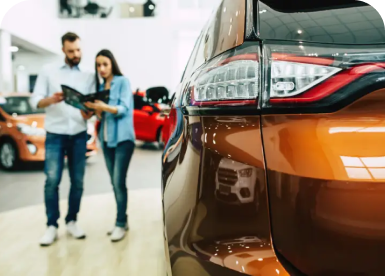According to the Australian Automobile Association’s (AAA) Transport Affordability Index, an average Australian household spends $9,533 per year on car loan repayments, and it is set to increase year to year. Apart from putting a roof over your head, a car is one of the most expensive expenses, so doing your homework does go a long way.
When shopping for a new car, don’t wait until you sign the paperwork before thinking how you’re going to pay for it!
Here are some smart ways to shop for your next car:
1. Review your credit before the purchase
Paying off your existing debt will help you with your capacity, which increases your borrowing power. Making payment on time will also increase your credit score over time, and a good score will gain you access to more lenders options, which may provide a better interest rate.
2. If affordability is not an issue, keep your term short
The longer your repayment term, the more interest you’ll pay. Therefore, if your goal is to pay as little interest as possible, while affordability is not an issue, then it is a good idea to keep the term short.
Stretching the term as long as possible does mean you’ll pay more interest, but also give you more budgeting flexibility due to the lower repayment, which can be tempted if you have plan to use the funding somewhere else.
3. Putting down a deposit
Lenders generally don’t like risk, and higher risk usually means a higher interest rate. The quickest way to reduce risk exposure is by borrowing less than the car’s total value, and this usually means trading in your old vehicle with high equity or contributing a form of deposit with the purchase.
Typically, an initial payment of 10% or more of the purchase price is a good place to start. So if you’re buying a $30,000 car, a 10% deposit is $3,000.
4. Always compare dealer finance
Buying a new car is an exciting journey, and many generally complete the whole purchasing journey within the same dealership. From the moment you walk in for a test drive, through to signing the paperwork and discussing finance, the whole experience could take hours, and at the end, you’ll want to sign anything to get out of there.
Not everyone has the spare $30k sitting in their back pocket, so that usually leave you with two options, which is to get a loan through the dealer finance or using a broker.
Dealer finance is when the dealer contacts their bank or lender of choice and helps to arrange a loan for the car. They will request all the information or documents on behalf and submit the application for you.
The other option is when you (the car buyer) apply for a car loan through a broker like us. We will collect the required information or documents and find you the most suitable lender out of our many options. We will then use the money to purchase the car from the dealer.
Dealer finance may seem like the easiest because it’s more convenient, and you’re there already but dealers have much less option (generally only a couple) and they may not have the flexibility for situations that are a little more complex. Some dealers’ rates are also less competitive compared to the market.
We always suggest that it’s worthwhile to get a second opinion through a broker before signing anything. As a surprise, they might even be able to source the same car for you cheaper!
5. Get a pre-approval before you walk into a dealership
The last thing you want is to find out your perfect car exceeds your budget.
By speaking to a broker, your assets, liabilities, and credit rating would be assessed to find out if you’re qualified to get a car loan for a specified amount. Walking into a dealership with pre-approval can speed up the buying process as both parties know you have a fixed limit, so there’s less chance of getting a dodgy deal.
This way, you can control your own budget, knowing exactly how much you can spend on the purchase.
